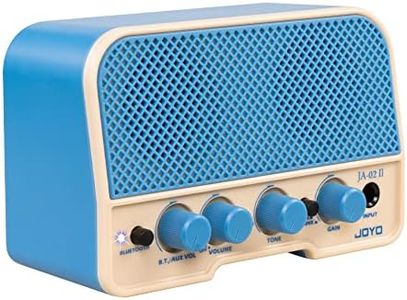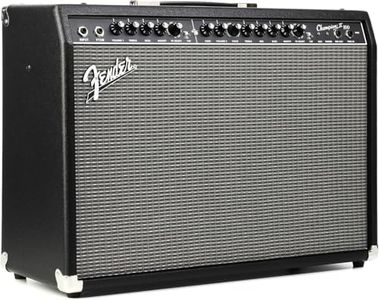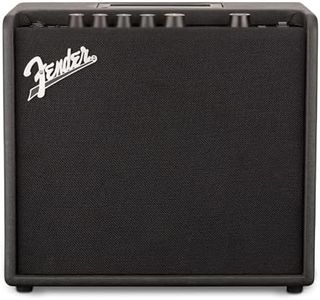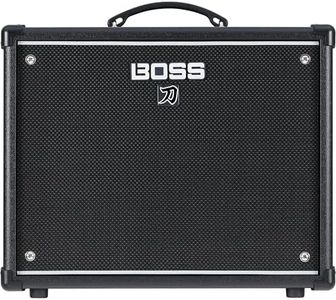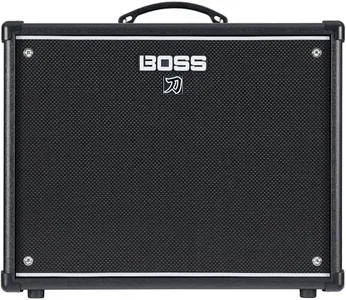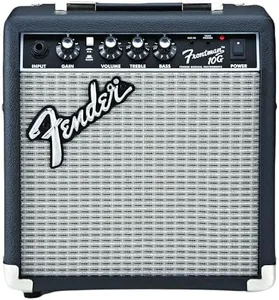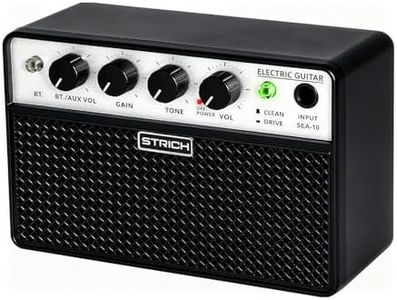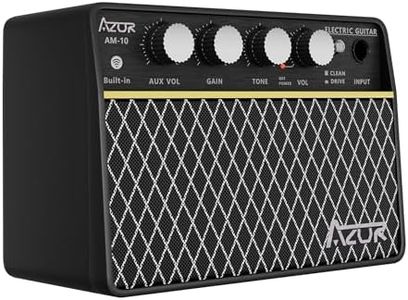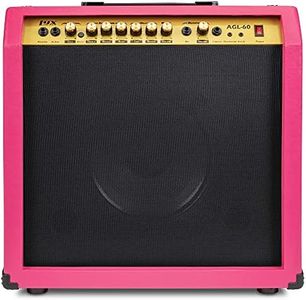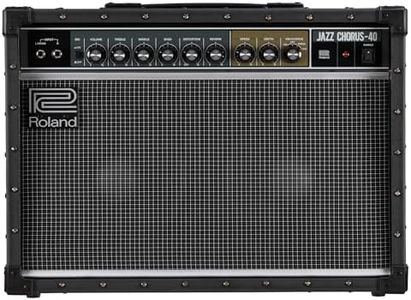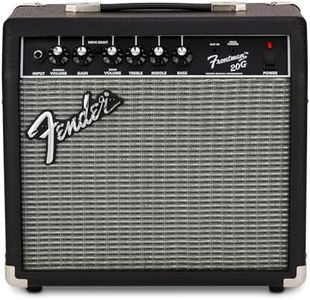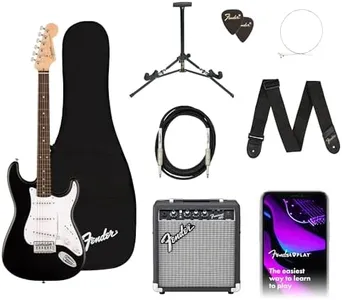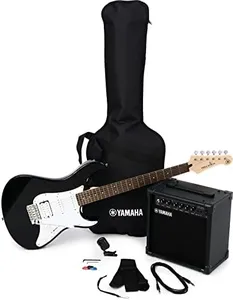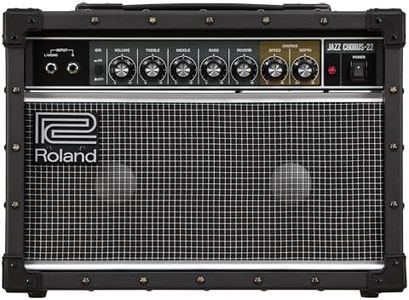10 Best Guitar Amps 2025 in the United States
Our technology thoroughly searches through the online shopping world, reviewing hundreds of sites. We then process and analyze this information, updating in real-time to bring you the latest top-rated products. This way, you always get the best and most current options available.

Our Top Picks
Winner
Fender Champion II 100 Guitar Amp, 100 Watts, with 2-Year Warranty, Features 15 Built-In Effects Models
Most important from
2530 reviews
The Fender Champion II 100 is a solid and powerful guitar amp delivering 100 watts through dual 12-inch Fender special design speakers, making it a great choice for players needing strong volume for rehearsals or small gigs. It features two channels with a single input, offering enough flexibility for clean and distorted tones, although more channels might be preferred by those wanting quick switching between multiple setups. The amp shines with its built-in effects, including reverb, delay, chorus, tremolo, and several amp voicings and distortion types, providing plenty of options to shape your sound without extra pedals.
This amp is solid-state rather than tube, so it won’t offer the same warm, organic tones that tube enthusiasts might seek. Portability could be a concern since it weighs nearly 46 pounds and is fairly large, which might make it less convenient for frequent transport. The Fender Champion II 100 fits well for guitarists who want a versatile, reliable, and feature-packed amp for practice, home use, or smaller live settings, especially if built-in effects and solid power in one package are priorities.
Most important from
2530 reviews
Fender Mustang LT25 Guitar Amp, 25-Watt Combo Amp, with 2-Year Warranty, 30 Preset Effects with USB Audio Interface for Recording
Most important from
3946 reviews
The Fender Mustang LT25 is a versatile guitar amp tailored for beginners and intermediate players who value simplicity and variety. With a wattage of 25 watts, this amp offers enough power for practice sessions and small gigs. Its 8-inch speaker delivers the classic Fender sound, known for its clarity and depth, but may not fill larger spaces effectively.
This is a modeling amp, which means it can emulate various sounds and effects, making it a great tool for exploring different music styles. It comes with 30 preset effects, allowing users to experiment and find their unique sound without needing separate pedals. The inclusion of a USB audio interface is a nice touch for those interested in recording, providing a straightforward way to capture your music on a computer.
The amp's simple user interface, featuring a 1.8-inch color display, is designed with beginners in mind, making it easy to navigate through different settings and effects. Its dimensions and weight (approximately 15 pounds) make it quite portable, though not the most lightweight option available.
One notable strength is its build quality, supported by a 2-year warranty, which assures reliability and peace of mind. However, users who play in larger venues or with bands may find the 25-watt power limiting, potentially requiring an upgrade to a more powerful amp.
The Fender Mustang LT25 is a solid choice for novice and hobbyist guitarists looking for a feature-rich, compact, and reliable amp. Although it may not suit professional-level performances, its array of features and ease of use make it an excellent tool for learning and experimenting with guitar sounds.
Most important from
3946 reviews
BOSS Katana-50 Gen 3 Guitar Amplifier | Compact 50-Watt Combo Amp | Custom 12-Inch Speaker | Evolved Tube Logic Sound | 12 Amp Characters | Onboard BOSS Effects | Advanced Connectivity & More
Most important from
199 reviews
The BOSS Katana-50 Gen 3 is a solid choice for guitar players looking for a versatile 50-watt combo amp that balances power and portability. It features a custom 12-inch speaker, which delivers a strong, clear sound suitable for small to medium venues or practice sessions. Using an evolved Tube Logic technology, this amp offers the warm feel and dynamic response often sought in tube amps, although it is a modeling amp rather than a pure tube type.
One of its highlights is the wide range of amp characters—six in total, including a new "Pushed" setting that adds a nice edge for players who enjoy a bit of breakup or distortion. You also get five independent effects sections (booster, modulation, FX, delay, and reverb) built-in, so you can shape your sound without extra pedals. Connectivity options include USB and a 3.5mm jack, making it easy to connect to computers or external devices for recording or practice.
Weighing just under 19 pounds and with compact dimensions, it’s fairly portable for gigging or home use. While not the loudest at 50 watts—so it may not suit very large venues—the Katana-50 Gen 3 performs well in versatility and sound quality for its size and price. It’s ideal for players who want a robust, feature-packed amp that sounds great and adapts to different styles without overwhelming complexity.
Most important from
199 reviews
Buying Guide for the Best Guitar Amps
Choosing the right guitar amp can significantly enhance your playing experience and overall sound. The right amp will depend on your playing style, the type of music you play, and where you plan to use it. Understanding the key specifications will help you make an informed decision and find the best fit for your needs.FAQ
Most Popular Categories Right Now
